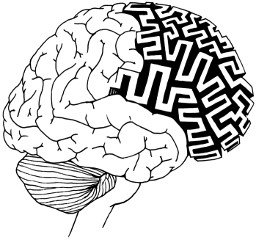
|
AREADNE 2026 Research in Encoding And Decoding of Neural Ensembles Eliopoulos Conference Center Milos, Greece 23–27 June 2026 |

|
Call for Abstracts
Contributed abstracts for poster presentation at AREADNE 2026 are solicited. Authors are encouraged to concentrate on aspects of their work that are relevant to the conference mission, namely, how multiple single neurons interact to encode brain activity, and how we might decode that ensemble activity to understand what the brain is doing. Experimental, theoretical, methods, and applied research are all encouraged. Abstracts will be judged based on relevance to the theme, scientific merit, and importance of results. AREADNE Conferences have a reputation for premiering exciting research with broad impact. Send us your best work!
The AREADNE Conferences are highly oversubscribed. We therefore can offer only one registration spot per poster to the (usually) first author of accepted posters. Submitters of abstracts that have co-first authors will need to bear this restriction in mind. Non-presenting authors are typically put on a waiting list, and only a handful are eventually offered a spot at the meeting.
PLEASE READ THIS PARAGRAPH CLOSELY. Does your abstract have a figure? Verify the final PDF to ensure that all font sizes in the figure are at least 8 pt. As a test, type the text that appears in the figure in a separate, temporary paragraph in the main body of your abstract, and set it to 8 point to compare sizes with your figure. If any text in the figure is smaller than 8 point you will need to re-do your figure before submitting.
Basic Formatting
o Abstracts should be written in English.
o One US letter page with margins as in the templates.
o Use of provided templates is required.
o Do not adjust formatting settings (paragraph, indent, margin, font, etc.).
o Optional Acknowledgments and References sections, in that order.
o No other section headers allowed.
o Use multiple paragraphs.
o Up to one figure, with 1 to 4 panels, 8 pt minimum font size (see below).
o Up to four peer-reviewed references; no pre-prints.
o See the sample abstract.
Abstracts must be submitted in both PDF and either LaTeX, or DOC form. (Why both?) Please note that documents produced using Apple Inc.'s Pages software often have compatibility issues, and so are strongly discouraged; as an alternative, we recommend using freely available LibreOffice software.
For LaTeX abstracts created with pdflatex, see
https://areadne.org/2026/AREADNE-2026-template-tex.zip.
For DOC abstracts created with either LibreOffice or Microsoft Word, see
https://areadne.org/2026/AREADNE-2026-template-doc.zip.
Both ZIP archives above contain a checklist to help avoid common formatting problems.
Content
Abstracts should describe new, previously unpublished advances that are relevant to the theme of the meeting. Posters from accepted abstracts will be expected to describe data, analyses, simulations or conclusions that have not been presented elsewhere.
Submissions should be one-page papers rather than research proposals. Accepted abstracts are far more likely to have multiple paragraphs rather than one monolithic block of text (and rejected abstracts the converse). The goal should be to clearly and concisely present your work. Submissions that do not contain results do not generally score well during review.
NOTE: Please do not try to squeeze as much material as possible into the one page. Abstracts that adjust the format to that end or ignore the specifications in this Call will need to be rewritten and resubmitted in order to be considered. Deadline extensions for such rewrites will not be given.
Figures
If you want to include a figure, pay close attention to this section. If you do not include a figure, it can be safely ignored.
A maximum of one figure may be included in each abstract, and must fit within the single page of the abstract and within the margins. Figures should be created at the intended size, rather than scaled down or up. All figure text, including axis and tick labels, legends, etc., should be no smaller than 8 pt font measured as the figure appears in the PDF. Please use a vector format for your figures whenever possible (EPS preferred), but avoid EMF and WMF as these formats are non-portable.
The single figure should have no more than four sub-panels labeled A, B, C, D. Do not be tempted to include as much information as you can possibly make fit and thus sacrifice clarity. Be clear and concise.
Do not crop figures within the word processor; such modifications will be lost during re-typesetting. Figures should be rendered at a minimum of 600 DPI for images, and 1200 DPI for line drawings or plots, even if they include images. EPS is the preferred figure format, as it is resolution-independent for lines, text and shapes when properly constructed. Avoid EMF and WMF. JPEGs are acceptable only for images without annotations, and must be encoded with at least 90% / maximum image quality. Low-resolution figures will need to be re-created at a higher resolution.
The figure caption should be brief, clear and describe the figure appropriately.
Please include the original, high-resolution file (in EPS or other vector format) as a separate attachment along with your submission.
*** NOTE *** Fonts being too small in figures causes three quarters of submissions with figures to be immediately rejected for correction and re-submission. Please avoid this extra reject-resubmit cycle by thoroughly checking your figures as they appear in the PDF rendering of your abstract.
Acknowledgments
An optional Acknowledgments section may be included to mention funding agencies and programs. It should be brief, and separated by a section header with blank lines above and below. See the example abstract.
References
If references are cited in the abstract, they should appear in a separate section called References toward the end of the abstract; citations should appear numerically in square brackets within the text [1]. References should be limited to no more than four total, to be listed in order of appearance in the text.
References should be one per line, and should include an author list (nominally three authors before et al.), year of publication, journal name, volume(number):pages, and DOI if available. Use standard abbreviations for journal names. Do not cite pre-prints, or unpublished material. If there is not enough room for your references, consider editing down the main body of your abstract. See the example abstract.
1. Flugen, Isha, Veebuck, et al. (2014) J Theor Physiol 9(4):8-33, 10.1006/jtp.2014.12
Other sections
No section headers should appear except for the optional Acknowledgments and References (in that order). Specifically, do NOT use, e.g, Introduction, Methods, Observation, Discussion, or any heading other than Acknowledgments and References.
Submission
Submit no more than one abstract per first author. Each attendee will be able to present at most one poster.
Submissions should be sent via email to submissions@areadne.org, using AREADNE 2026 poster submission as the subject line. Attach the PDF file and the LaTeX or DOC file to a message that includes the corresponding author's name, affiliation, and email address for communication about the submission. This address does not necessarily need to be the same as the address used for publication, but must be the corresponding author's primary email address to ensure rapid, efficient communication about the submission.
Abstracts should be submitted between 12 January 2026 and 30 January 2026.
Review
A preliminary review is performed at the time of submission. Passing this preliminary review means the submission will proceed to peer review as described immediately below. The large majority of submissions with figures require modifications to pass preliminary review, usually because of problems with font sizes being too small --- this delay can be avoided by checking that your figures conform to the style guidelines above. Some submissions are rejected at preliminary review, typically because of issues of scope and relevance.
Each submission that proceeds to peer review will be reviewed by every member of the organizing committee, except the co-chair in charge of overseeing submitted content. Reviewers score each abstract on three criteria, conference relevance, scientific merit, and significance of results. Reviewers with a conflict of interest recuse themselves from consideration of pertinent submissions. The scores are combined for each submission and used to rank the set of submissions. Accept / wait-list / reject decisions are based on that ranking. Late abstracts are integrated into this process when possible, but suffer a penalty that affects decisions at the thresholds. For example, a late abstract is much more likely to be wait-listed than one that was on time. The number of accepted abstracts is strictly limited in order to maintain the intimacy of the meeting appropriate to the venue. Final review scores are not communicated and will not be made available.
In order to maintain objectivity of the review process, any attempt to exert influence, for example by contacting members of the organizing committee to advocate for a particular submission, will automatically trigger rejection of the submission, and may result in restrictions on participation in AREADNE meetings.
Decisions by the review committee are made in the larger context of the meeting capacity and are thus not independent; therefore, no appeals process is available.
Problems with the templates (including not downloading)? Let us know by email or through the contact form.
AREADNE | Email | Search | Archive